Best Uruguayan documentary movies
Get ready to binge. We've found a collection of must-watch documentary films from Uruguay, now streaming on Netflix, HBO, Hulu, Prime Video, and other top services!
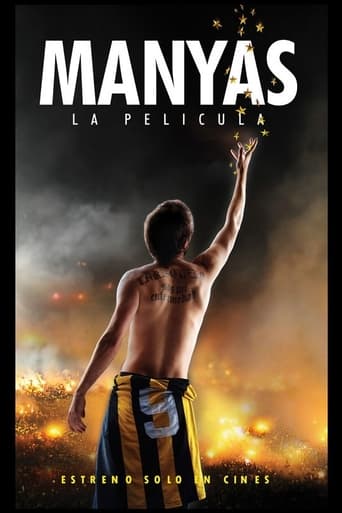
Manyas, La Película 2011
More than a film about football, this documentary is the portrait of a passion. Through several testimonies, what is shown is the feeling of the fan of Peñarol and what he is capable of doing for the team of his loves. From the largest flag in the world to the most spectacular receptions, including tattoos, anecdotes, promises and much more.
100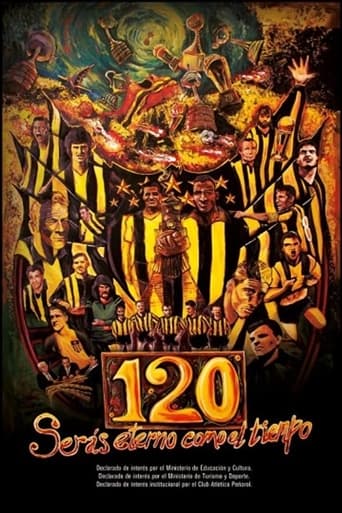
120, Serás eterno como el tiempo 2012
It tells the history of Peñarol from 1891 to the 2011 Copa Libertadores, of which the club was vice-champion. After more than six years of production, it brings together more than a hundred interviews carried out with the protagonists of this story: retired and current players, presidents and technical directors of the club, historians, sociologists and many other actors linked to the institution.
100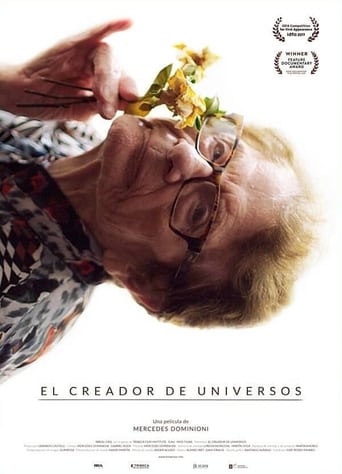
The Creator of Universes 2017
A sixteen year old with Asperger's creates telenovelas at home with his 97-year old grandmother.
100
Gonchi 2015
The story of a Uruguayan car racer that dreamt about being in F1 and did all that was possible to reach his goal. When he was about to reach his best prize, he died in a car accident at the CART World Series tests in Laguna Seca, US. This is a story about inspiration and overcoming obstacles. It portrays that nothing is impossible in life if there is dedication and love. A story about a young man that went through many hardships and that raced with the best. He came from a far away country with no tradition in the international automobile racing world.
78
Pepe's Dreams - Movement 2052 2024
On a planet headed for climate collapse, where humanity pursues a predatory model of development and consumption, the philosophy of former Uruguayan President Pepe Mujica raises an alarm in all of us. Pepe’s dream is to leave a better planet for future generations. However, time is running out and there is no way back.
80
Alexis Viera: A Story of Surviving 2019
After being shot during a robbery in Colombia and losing sensation in his legs, Uruguayan soccer star Alexis Viera finds a new sense of purpose.
66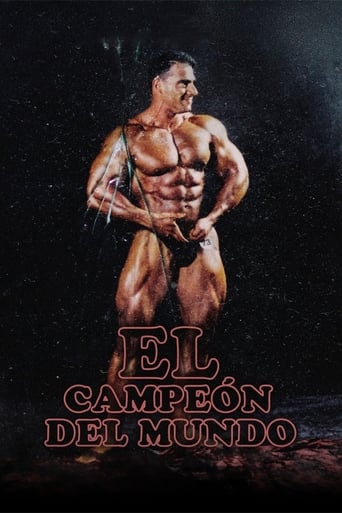
The Champion of the World 2019
Ten years after winning a world title in bodybuilding in Russia and becoming a star of said discipline in Mexico, Antonio Osta (43) leads a life of austerity in the Uruguayan rural town where he grew up. He resides there with his son Juanjo (17), a sensitive teenager who keeps him company and confronts him openly. Suffering from acute kidney disease which keeps him from competing professionally, Antonio is stuck in limbo, halfway between his glorious past and the impossibility of being who he once was. However, he is unwilling to give up his lifestyle, even if it kills him. In an attempt to reinvent himself, and seeking a better future for his son, Antonio plans a comeback to the Mexico bodybuilding scene, where he may relive his glory days.
80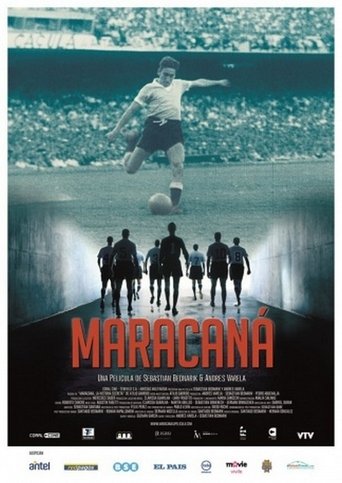
Maracaná 2014
The unexpected victory over Uruguay in the World Cup Brazil 1950 continues to have social and political ramifications for both countries.
59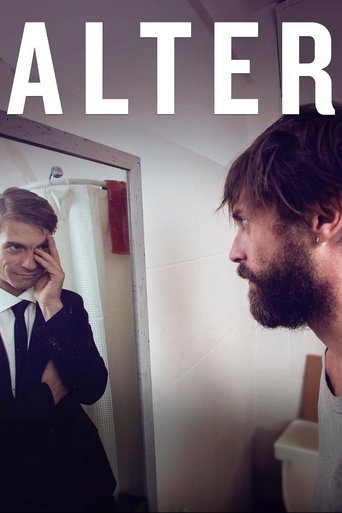
Alter 2022
After being fired from his job, a psychologist and frustrated songwriter begins his career as an imitator of Latino superstar Luis Miguel, gaining local fame while singing someone else's songs as he questions who he wants to be.
70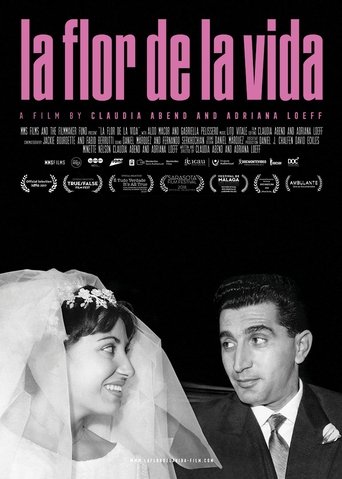
La Flor de la Vida 2017
Aldo, an exuberant 80-year-old man, and Gabriella, his introverted wife for the better part of five decades, candidly reflect on the deterioration of their marriage, much of which Aldo has captured on video. Watching these evocative home movies, looking through photos and hearing the couple's stories, we are transported through the glorious and dreamy moments of a young, beautiful couple in love. But as the façade of those picture-perfect moments fades away, Aldo and Gabriella are forced to ruminate on the mistakes they've made and the people they no longer are. Adriana Loeff and Claudia Abend have crafted a heartfelt film about the power of love, the universality of heartbreak, and an inescapable truth: We all will grow old with less-than-perfect grace.
65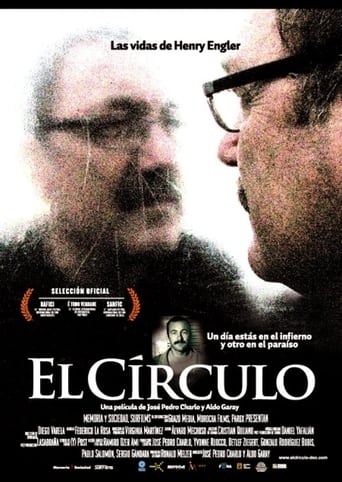
The Circle 2008
Award-winning documentary about how one Uruguayan leftist survived solitary confinement during the dirty war. The story of former Tupamaro guerilla fighter, Henry Engler, whose prolonged confinement and torture during the Uruguayan dictatorship led to a mental breakdown. Today Dr. Engler is a Swedish citizen and a scientist renowned for his research into Alzheimer’s disease. In this impressive documentary, the scientist visits the places of his painful past, painting an intimate and disturbing portrait of prison life under the dictatorship.
56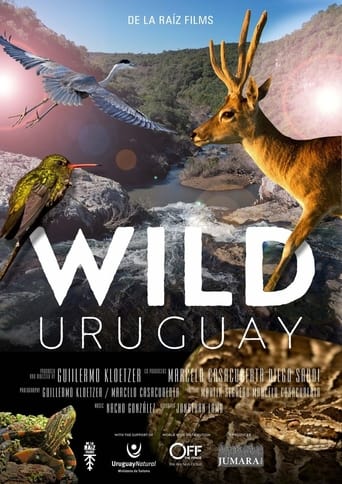
Wild Uruguay 2020
Today we know that Uruguay is not only a gently undulating peneplain, in this country different ecosystems are found; species from the Pampas, the Atlantic Forest and the Chaco Forest come face to face, giving rise to unexpected scenes.
60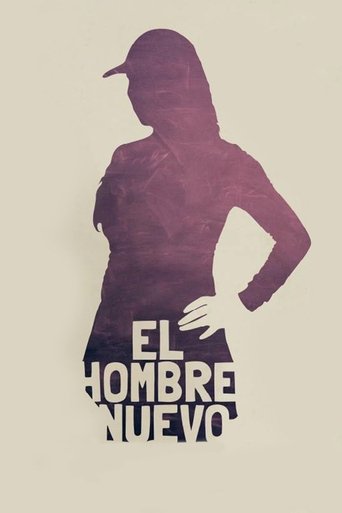
The New Man 2015
At the tender age of twelve, Roberto supported the Sandinista revolution in Nicaragua and fought for education and social reforms. He was to continue his political struggle fighting alongside the communist Tupamaros in Uruguay. Thirty years later he is struggling to live his life as a woman named Stephanía and striving to be accepted by both society and his family.
60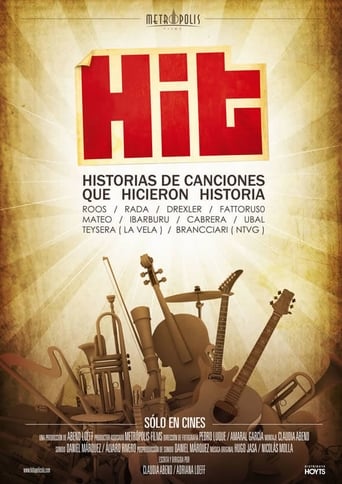
Hit 2008
Through the memories and confessions of some of the most important names in Uruguayan music, the film brings back to life the stories of the songs that defined a country and that, in some cases, helped change history.
60
Márama - Rombai: The Journey 2016
Popular South American bands Márama and Rombai share footage of behind-the-scenes antics and discuss their sudden rise to stardom.
50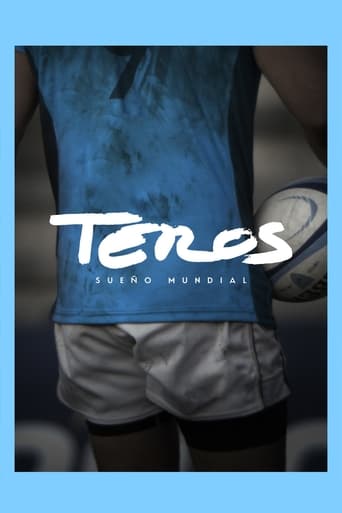
Teros, sueño mundial 2015
The campaign of the Uruguayan rugby team, nicknamed "Los Teros", during the 2015 Rugby World Cup qualification, and the amateur character of its players that contrasts against the professionalism of their group rivals.
50
Cachila 2008
The Silva family is pioneer and a role model within the community; it shows values and the goal to not let the candombe tradition fade away. Not only do they have an internal hierarchy, but also in his neighbourhood, Waldemar “Cachila” Silva is a respected leader. Cachila decide to pass on his legacy to his sons Matias and Wellington, who should now lead the family business, afro descendants playing candombe, a drum rhythm for the carnival contest and keep the privilege place obtained by the family. Patriarchy, hierarchy and cultural traditions are the concepts that drive this documentary about the life of a man of African descent and a dysfunctional family trying to perpetuate its power, which is crucial for the future of a culture.
50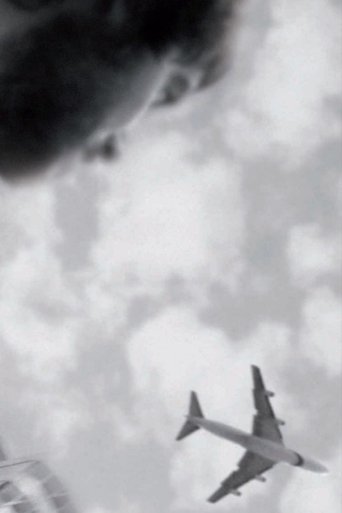
Asylum 2007
This documentary focuses on a little-known episode in the recent history of Uruguay: how hundreds of Uruguayan citizens took refuge in the Mexican embassy at the time of the military dictatorship. Between 1975 and 1976, Mexico was the only country whose embassy gave shelter to people persecuted by the regime, and this sparked off a difficult period in the relations between the two nations. We learn about conditions at the embassy at that time and how the fugitives lived. Sixteen of the men and women involved talk about what that period was like and the events that led up to this confrontation between the two countries. The documentary is also a homage to the Mexican ambassador, don Vicente Muñoz Arroyo.
50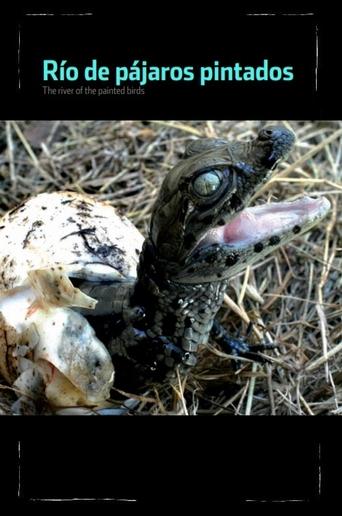
The River of the Painted Birds 2008
A north to south canoe trip along quiet bodies of water of Uruguay, exploring the fauna and flora amidst the wilderness.
50
Bicycle Race at the Arroyo Seco Cycle Track 1898
A record of a bicycle race held at the Arroyo Seco velodrome, which was located in the Quinta de Iglesias street (modern day Agraciada) by Entre Ríos, Zapicán and San Fructuoso.
40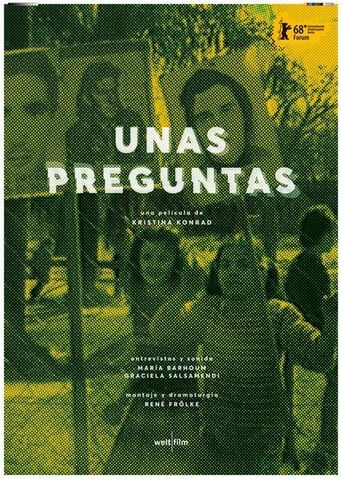
One or Two Questions 2018
In 1986, the Uruguayan Parliament passed a law granting amnesty for all crimes and human rights violations committed by the military and police during the dictatorship (1973-85). This law of impunity prevented the clarification demanded by the relatives of those who had disappeared and been murdered by the former regime. A public initiative arose calling for a referendum in which the law be subject to the vote of the people. Unas preguntas uses U-matic footage, mostly of interviews recorded on the streets of Uruguay between 1987 and 1989, to present a time capsule of the period.
40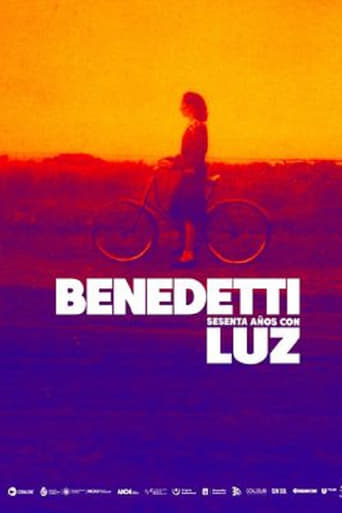
Benedetti, 60 años con Luz 2022
Mario Benedetti and Luz López met when they were teenagers, he became a writer and she became a public servant. Together they shared life, exile, failures, success, friends and love. Sixty years and eighty books later, Luz suffers from Alzheimer's, forgets all of her past, and finally she forgets Mario just before she died. The film reconstructs this memory with an eye set on the author and the love that bound them together.
40
Me gustan los estudiantes 1968
Students protest during the Chiefs of State conference at Punta del Este. Counterpoint between presidents, students and repressive policemen.
35A Holiday in Uruguay 1951
Presents the activities of a young woman on a holiday.
30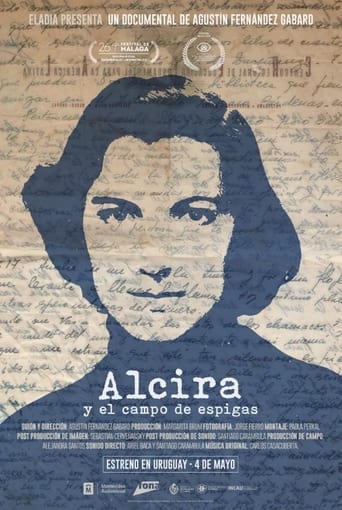
Alcira y el campo de espigas 2023
Alcira Soust Scaffo is a Uruguayan poet who became a legend by hiding in a bathroom for the 12 days that the Mexican army occupied a university in 1968. A woman whose life oscillated between delirium and sanity, between rooftops, trees and houses. A forgotten and unforgettable poet.
30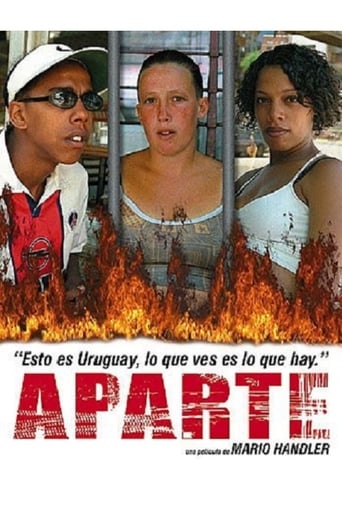
Aside 2002
Rare images of real life stories in the so-called "asentamientos" in the poor underbelly of Uruguay's capital, Montevideo, and in its youth jails. The difficulties of finding a job and scraping together some money, the temptations of crime and its harsh consequences, the lack of culture and knowledge of the basics of life, are all intertwined in parallel lives.
30
Portrait of My Father 2022
Juan Ignacio Fernández Hoppe was just eight years old when his father’s body was found on a beach. His mother, a psychiatrist, decided an autopsy was unnecessary, even though his father had been depressed and had psychiatric medication among his belongings. Thirty years later, the filmmaker tries to find out what happened, who his father was and how his mother arrived at her decision.
30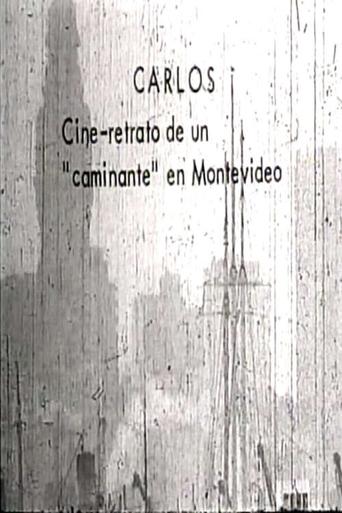
Carlos: Film Portrait of a Montevideo Panhandler 1965
The "caminante" refers to a hobo who roams the countryside, a nomenclature preferred by Carlos, who once traveled all over Uruguay before becoming a homeless vagabond, or "bichiome", in the city of Montevideo. The film presents a portrait of society through the life of one marginalized individual.
25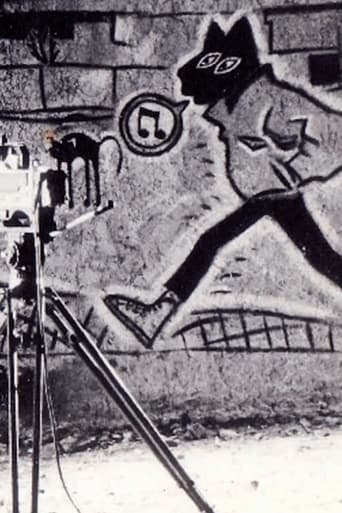
Mama Was Punk 1988
"With the democratic recovery in Uruguay, a state defined by some as "the drifting situation in which Uruguayan culture is found" becomes explicit. A youth sector oscillates between transformative creativity and disenchantment, they question their elders, the country and their conservative and exclusive habits." - Ulf Kjell Gür
25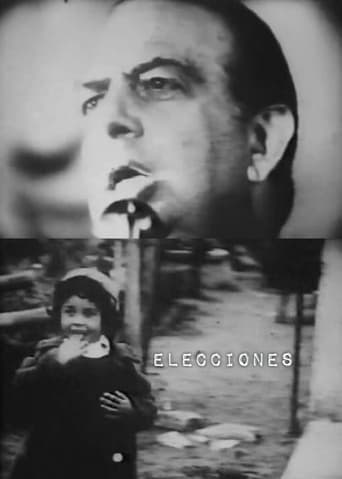
Elecciones 1967
Documentary on the electoral system in Uruguay. It focused on the upcoming federal elections, criticizing both of the country's political parties.
20
Jaime Roos at 10 1994
At ten o'clock on the night of 20 November 1993, in the Barrio Sur neighbourhood of Montevideo, Jaime Roos began the first of 42 concerts on a tour that lasted three months and included performances in all 19 departments of the country. In total some 300,000 saw him play. This documentary captures the essence of that unique tour and it is a crucial contribution to our understanding of Jaime Roos and his position in Uruguayan music towards the end of the 20th century.
20
Carnaval in Baltasar Brum 1997
Baltasar Brum is a town of three thousand souls in the department of Artigas. In 1986 the train station was closed down and the community was in danger of disappearing altogether, but today it is still there and in fact it is growing. The local samba “schools”, which are similar to these organizations in Brazil except that they speak Spanish, tell the story of the town and its outstanding figures against a background of local and more universal events. The documentary shows how carnival is celebrated in this Uruguayan border town.
20
The Implacable Purity of Oblivion 1998
A musician and composer who grew up in Tacuarembó, Eduardo Darnauchans, was one of the main creators of popular music in Uruguay. He was persecuted for political reasons from 1962 to 1984, and this documentary covers his life and work as a reflection of that troubled time.
20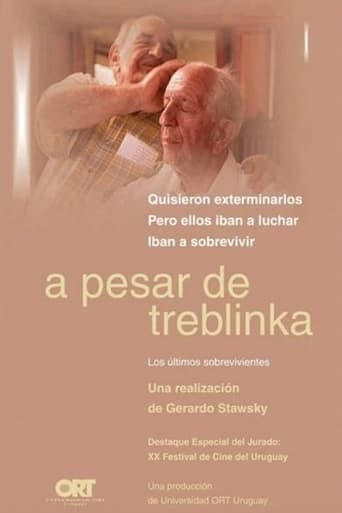
Despite Treblinka 2002
In 1942, nazi leaders met in Wansee to organize the final solution to the Jewish problem. The Warsaw guetto was first. Treblinka was created in a rural village near the Polish capital. 900.000 Jews and 500 Gypsies were murdered in 13 months. On August, 1943, the prisoners revolted and destroyed the camp. Only a few survived. Less than 10 worldwide remain today. Despite Treblinka tells the story of Mr. Rajchman, Mr. Wilenberg and Mr. Teigman. The movie follows the protagonists' paths in fairly chronological manner, from pre-war years, through Treblinka and the uprising, to the recent past and present, where a series of vignettes, often hilarious, show the possibility of living “despite” the horror.
20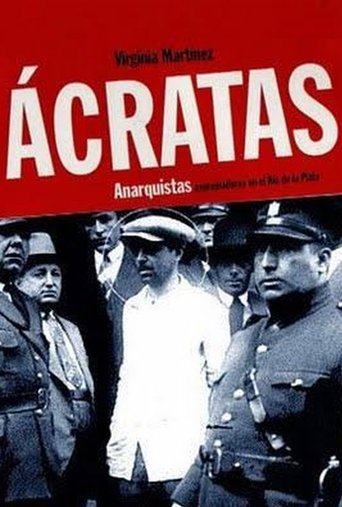
Anarchists 2000
Armed based on photography, period films, archival materials and testimonies of survivors, family members and historians, the documentary accurately and exquisitely reconstructs the course of the “expropriating anarchists” in the Río de la Plata and specifically in Montevideo del First third of the 20th century.
20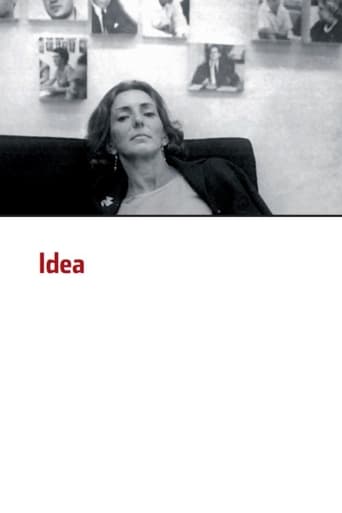
Idea 1997
Idea approaches the figure of Idea Vilariño, considered as one of the greatest Spanish-language female poets. Her literary work, especially her poetry, is acclaimed by critics and public alike, a rare case in the Uruguayan culture scene. With her own testimony, pictures, poems, songs and archive footage, this documentary offers an in-depth look at the essence of Idea Vilariño's poetic universe in a frank adherence to her literary and human posture. Her childhood, her ghosts, her desolate vision of a godless world, the stormy burden of suffering from her relationship with Juan Carlos Onetti and the commitment assumed with the issues of her time define the various facets of this woman.
20
Dieste: the Consciousness of Form 1997
The engineer Eladio Dieste, the most innovative architect in Uruguay, is interviewed by the architect Mariano Arana. He talks about the ethical responsibility involved in creating, the idea that the things that surround us should be beautiful, and how important it is to use our intelligence and creativity to produce original responses and generate our own ways of thinking.
20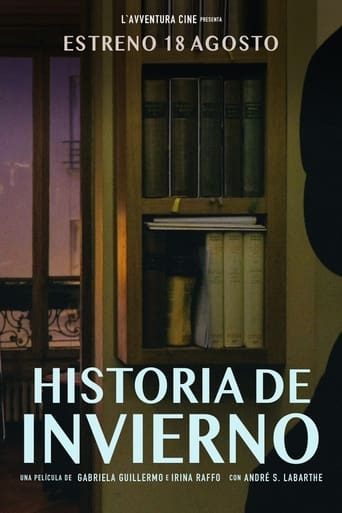
Historia de invierno 2022
A cinematographic poetry that portrays the artistic link between the French filmmaker André S. Labarthe and his disciple, the Uruguayan filmmaker Gabriela Guillermo. The letters that were written over the years testify, not only to the mutual affection and admiration, but also their will to one day make a movie together. After trouble in the production due to the teacher's delicate health and his subsequent death, we witness in the winter landscapes the creative complicity between both filmmakers.
20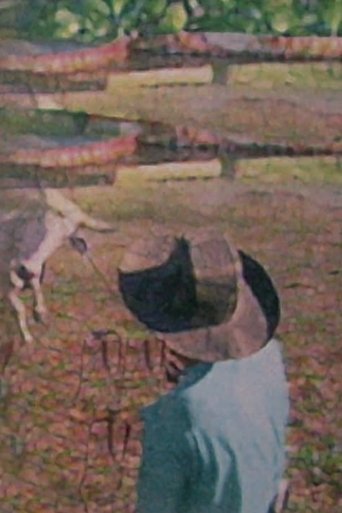
Pantanal: The Waters of Life 1997
Forty million people and countless species of flora and fauna depend on the rivers of the Rio de la Plata basin. But there is a development initiative, the Paraguay-Paraná Waterway Project, which aims to change the natural courses of these rivers and build a “Super Highway River” for the transport of grain and raw materials. If this project is implemented, what will the consequences be for society and for the environment?
20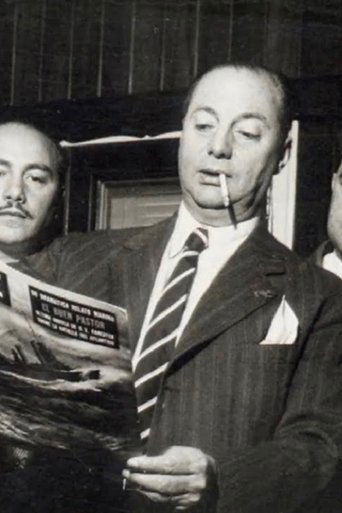
Luis Batlle Berres 1999
This is the story of Luis Batlle Berres, an outstanding political figure, told against the background of life in Uruguay from 1900 to the 1960s. With archive images and music from the period, this documentary pays homage to those years and to a time gone by. There is testimony from Batlle's personal hairdresser, his master of arms, his children and travelling companions in politics, and his adversaries. We witness his meeting with General Juan Domingo Perón, and we see the Graf Zeppelin with its swastika in the sky above Montevideo.
20
Héctor the Weaver 2001
Héctor Rodríguez (1918-1996) was one of the outstanding figures in the people's movement in Uruguay. He was a textile worker and also a member of parliament for the Communist Party, and he was expelled from their ranks in the 1950s. He was a journalist, a militant activist and a political prisoner, and a key force in trade union unity and left wing politics in Uruguay. His life was bound up with some of the most important events in the history of this country after 1930. As well as Héctor's own testimony we have the voices of textile workers, intellectuals, union members and politicians, in a rich mixture of archive film and photographs.
20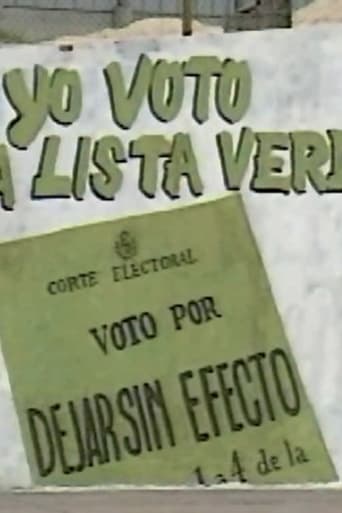
The Recourse of Memory 2000
Ten years after the Law of Expiration, this documentary analyses the historical background of Uruguay's recent past. It is a survey of the controversy stirred up in society by the fact that, thanks to this law, the armed forces personnel and police who committed crimes under the dictatorship (1973-1985) have gone unpunished, and it examines the scars the authoritarian regime left on a section of the population.
20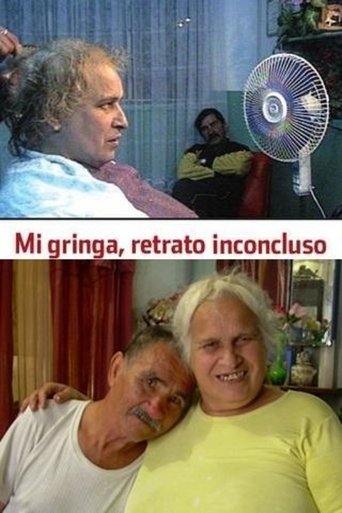
My Strange Girlfriend - An Unfinished Story 2001
This documentary, which is the first part of a long-term project, tells the story of Julia, a trans-sexual who even manages to get her identity document changed, and of her partner Ignacio. The couple let the camera into their world, and with complete candour and frankness they give us a kind of intimate diary on film.
20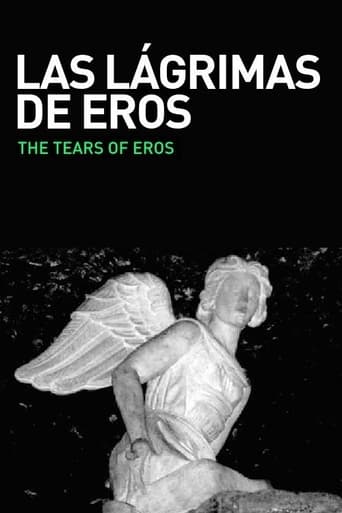
The Tears of Eros 1998
This documentary examines sexuality as seen by women and men born into Catholic families and educated at Catholic schools. These people talk about the Church's refusal to face reality and how this short-sightedness leads to lies, feelings of guilt, a block on eroticism, unwanted pregnancies, deaths resulting from illegal abortions, and ignorance about AIDS that in fact helps the disease to spread.
20
The Rocha Wetlands: The Secret of the Waters 1991
In the east of Uruguay there is a little-known region of vast wetlands in a beautiful natural setting which is a sanctuary for thousands of species of flora and fauna. Although it is officially protected, it is under threat from rice producers who are draining parts of the area.
10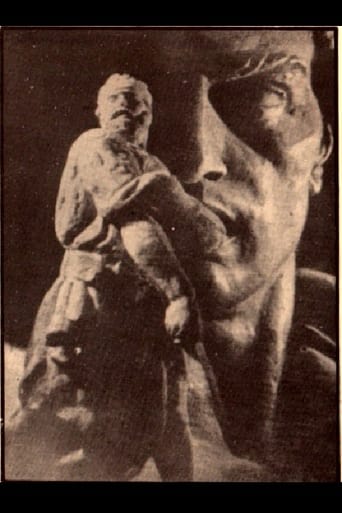
Artigas, Protector of the Free Peoples 1951
Tells the story of the Chief of the Orientals from a few elements: paintings, monuments and proclamations, managing in many passages to create a strong sense of movement and reality.
10
Voices For a Story 1987
Women in an isolated backwater in the countryside tell the story of how they live, and talk about their work in a cooperative that processes wool to make good quality clothing.
10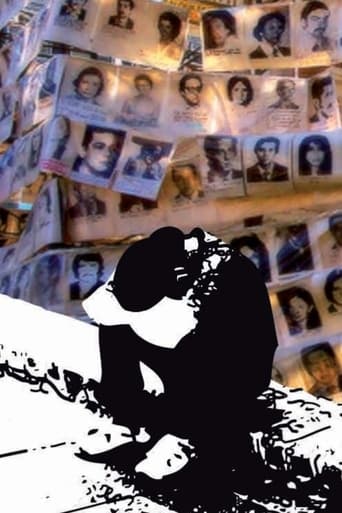
On the Edge 1987
After the end of the dictatorship, Uruguay was faced with the unresolved problem of what to do with the past. In this documentary the CEMA camera team roam the city streets and find out what Montevideans think about bringing armed forces personnel to justice. This tour reveals a climate of scepticism, a climate of fear and suspicion, but also a will and a desire that justice must be done.
10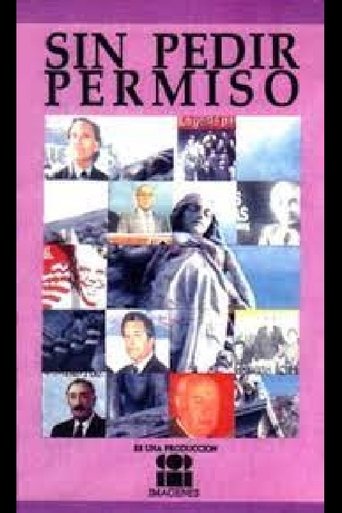
Without Asking Permission 1989
The subject is women and their participation in politics, and this is used as a pretext for a humorous, provocative, female perspective on official (male) discourse and the almost nonexistent participation of women in Uruguayan politics.
10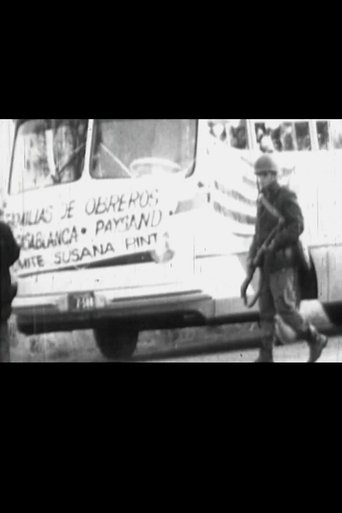
Uruguay 1969: El Problema de la Carne 1969
After the meat industry workers stop receiving 2 kilograms of meat a day as a part of their salary, they organize the biggest strike in Uruguayan history. Images of farms. Meeting at the workers' society. Relations between the Uruguayan economic and political leaders and the United States. Scenes of decay and misery. Workers' demonstrations. Clashes between police and demonstrators.
10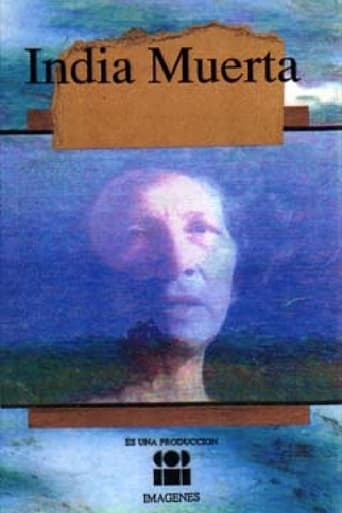
India Muerta 1992
This is a marsh area in the very heart of the protected wetlands in the east of Uruguay, but today it has almost completely disappeared. A message in the Guaraní language, an "India Muerta" prayer, sounds the alarm about the dire consequences for nature of what human beings are doing.
10
Atahualpa, Bird of Fulfilment 1992
This is a documentary about the life and work of Atahualpa del Cioppo, one of the outstanding figures in Uruguayan and Latin American theatre. We are shown his life today, his old friends and his passion for the theatre, against the backdrop of his home, the city of Montevideo.
10
Cornered 1992
The community at Rincón de la Bolsa, just a few kilometres from Montevideo, is suffering from all kinds of environmental problems, and the local people organize and demand solutions.
10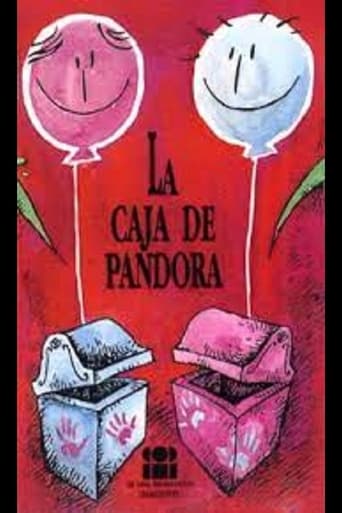
Pandora's Box 1991
From an early age children are brought up very differently depending on their gender. The process of discovering the world is a veritable box of surprises in which school, the family and the media programme us about what it is to be a “good” girl or a “good” boy.
10
The Chimera of the Coast 1994
This documentary examines the problems of Uruguay's Atlantic coast in the face of a scheme to exploit the area's tourist resources that is not geared to sustainable development.
10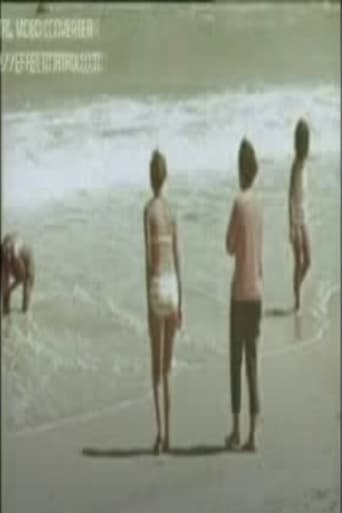
The City in the Beach 1961
A film commissioned by the National Tourism Commission, "The City on the Beach" is, however, more than a documentary to disseminate the benefits and beauties of Pocitos beach in Montevideo. The film proposes a sociological construction in-situ, through real characters. Musitelli's eye, patient and sharp, does not spare humor or poetry.
10
Como el Uruguay no hay 1960
Early on, Ugo Ulive, with his short film Como el Uruguay no hay (1960), seeks to raise awareness and involve the viewer in political action and its radical transformation. Through a collage of animations, archival footage and a counterpoint sound montage, Ulive attacks traditional left-wing and right-wing politics and exposes the contradictions of a pillar of national identity: Uruguay's famous democracy. Note that we are in 1960 and while the voice over presents Montevideo as "a small agitated city", the images show a tense scenario with social protests and a politicized urban space with the presence of mounted police.
10
Juegos y Rondas Tradicionales del Uruguay 1966
Documentary made from the record of five manifestations of Uruguayan children's folklore: «El rango», «La rayuela», «Andelito de oro», «La farolera» and «San Severín del monte» / «Los oficios».
10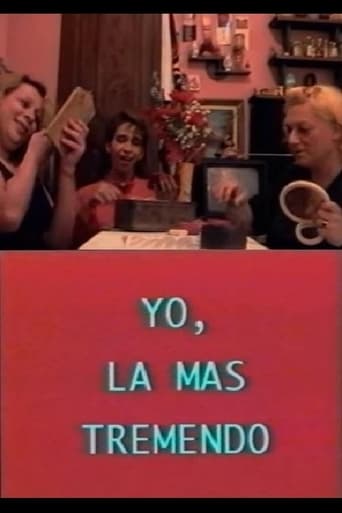
I'm a Guy but I'm the Best Girl 1995
The first documentary about the little-known world of transvestites in Montevideo. We are shown the most complicated facets of these people, their consciousness of themselves, and their perceptions of the world and of life. We learn about their everyday (and every night) experiences, and how they cope with the bigotry and old fashioned attitudes that are all around.
10
Uruguay, the Unrendered Accounts 1989
The Uruguay of restored democracy alter years of military dictatorship remains divided about what to do with de military accused of violations of human rights during their government. This documentary records that division and the opinion of different people previous to the referendum on April 16, wich finally granted amnesty for the military.
10
La gesta de una conciencia 1985
Audiovisual on three screens that commemorates a triple anniversary: 70 years of the Association of Medical Students, 65 of the Uruguayan Medical Union and 50 of its Assistance Center.
10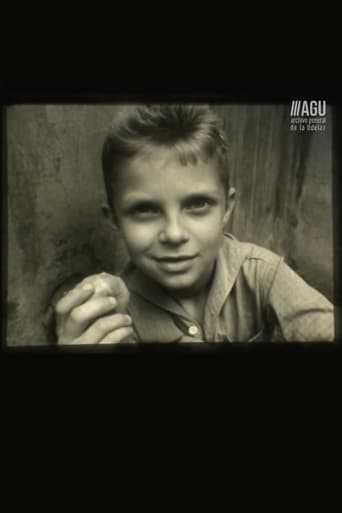
In Prague 1964
Documentary short film by Mario Handler about the city of Prague as part of an internship to study film in Europe.
10Miguelete: Heads and Tails of a Stream 1952
Considered one of the first documentary about contaminated water in Uruguay.
10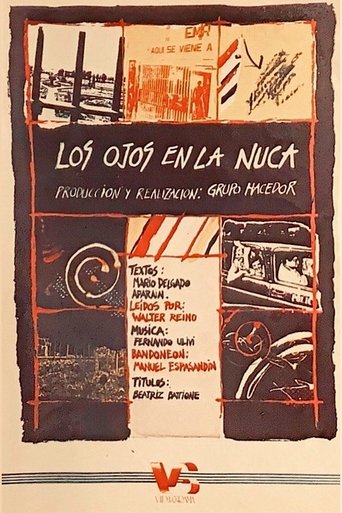
Watching the Back of your Neck 1988
We learn about arbitrary rule under the dictatorship, the torture, the ill-treatment in prison and the plight of the Tupamaro hostages, told in the words of former political prisoners, psychologists and family members who had their lives turned upside down in a raid, or who suffered the anguish of searching for someone who had been “disappeared”.
10